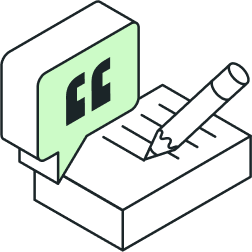
As a Product Marketing Manager at Statsig, I've had the privilege of engaging with world-class product leaders while crafting comprehensive case studies.
This unique perspective has given me profound insights into the success factors that have enabled companies to transition from ground zero to becoming market leaders in experimentation.
During our recent meetup, Lessons Learnt from Real-World PLG Experiments, I shared these key success factors, innovative areas for experimentation, and actionable takeaways based on real-world examples.
Upon reflection, I noticed three recurring themes that were prevalent among these successful organizations that leveraged experimentation to fuel PLG:
1. Culture
These organizations had a distinct culture that underpinned their success.
This culture was characterized by leadership buy-in, robust cross-functional collaboration, alignment across teams on KPIs, and, a commitment to a customer-centric, data-driven approach. This culture valued taking calculated risks and granting autonomy to teams, allowing them to operate with freedom and speed.
The driving force behind the cultural transformation in many of these successful organizations came from dedicated change agents. In fact, many of our early customers at Statsig were former leaders at FAANG companies. They brought with them the sophisticated tools and practices they had observed at their previous organizations and applied them to newer, fast-growing companies.
What set these organizations apart was their profound understanding of the connection between experimentation and tangible business outcomes. They were skilled at linking their experimentation efforts to overarching business goals, and they maintained a steadfast commitment to a long-term mindset that yielded enduring results.
2. Velocity
We delved into what life looked like before and after companies underwent a transformation in their experimentation culture.
Before Statsig, it was challenging to initiate and scale experimentation:
Few experiments (often in single digits) per quarter
Delays and bottlenecks in analysis, involving substantial manual work
Limited feedback loops and low visibility across teams
Concerns about the reliability of experiment results
Inadequate logging and ingestion of exposure events
Lack of a single source of truth, leading to data silos and unavailability of all metrics
Limited resources for building, scaling, and maintaining infrastructure
Experiencing misses, frustrations, and slower release cycles
After Statsig, the PLG vision became a reality:
A 10x to 30x increase, with hundreds of experiments run per quarter
Concurrently running multiple experiments
Self-service access and cross-functional visibility of experiment results
Teams empowered to make data-driven decisions
Regular tracking of progress, including holdouts to measure aggregate impact on a core business metric like Activation or Retention
A focus on generating ideas rather than fixing operational issues
Read our customer stories

3. Learning
The best PLG companies view experimentation as the ultimate way to learn in a dynamic market. For these companies, their high volume and velocity of experiments meant faster learning and diverse insights. They had a strong process for running experiments, including a clear experiment description and hypothesis, understanding what they were testing, and the metrics to track (both primary and secondary).
Toney Wen, CTO, and Co-founder of Cider, summed it up nicely: "Experimentation serves as the gateway to gaining a deeper understanding of our customers."
We then delved deep into customer stories with Lime and Cider to draw insights from their successes.
Here are some generalizable takeaways from these case studies:
Identifying the drop-off point can open doors to new experimentation opportunities for growth.
Even simple features, when introduced at the right moment in the user journey, can significantly drive growth.
The initial user experience plays a pivotal role in subsequent usage and retention/LTV.
Reduce friction in making a purchase by minimizing screens and information.
Tailor localized experiences to resonate with different cultures.
Focus on long-term retention rather than short-term vanity wins.
Start early and benefit from compounding over time (you don't have to wait to become a large organization to benefit from experimentation).
Finally, I provided a framework of a customer journey map to help product teams identify and leverage low-hanging fruit to supercharge experiments and drive growth, reiterating what matters most: having a product sense, empathizing with customers, and delighting users.
Thank you for tuning in, and in case you missed it, check out the full recording here:
Get started now!

